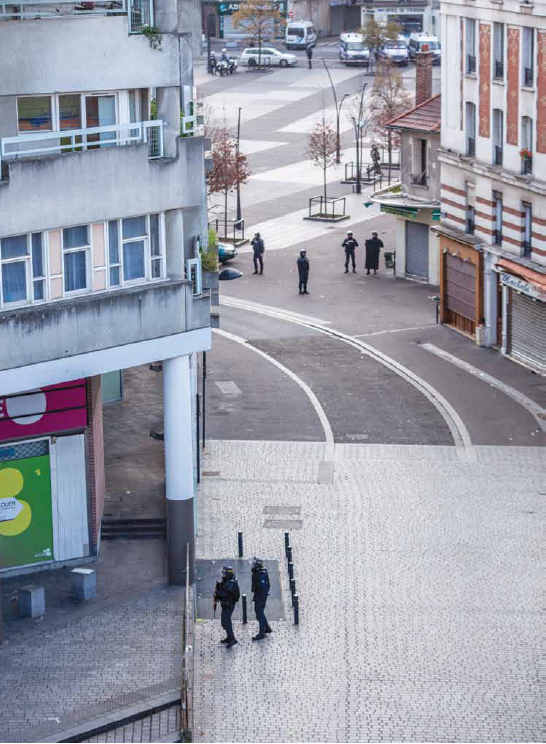Please click here to view the whole story, “Islam and the French Republic,” by Ben Judah in the july/August issue of standpoint.
A swirl of purple and blue light glows out of the rose windows of the cathedral of Saint-Denis and spills mystery over the silence of the nave. I am standing in a sacred necropolis: the burial place of the kings of France. Tombs surround me. Carved out of limestone, their faces calm, they look as if they are sleeping. The crypt holds their bones, from Dagobert I all the way to Louis XIII. This is the line of the Sun King. A man lies here who was not a king: Charles Martel, the Frankish warrior who Gibbon believed had saved Christendom by defeating the Arab invasion of France on the battlefield near Poitiers in 732.
Two hundred metres away, it is time for Friday prayers. The mosque is overflowing. Every week 3,000 believers come to pray here on Rue de la Boulangerie, in a dingy space that cannot hold more than 1,800. In tracksuits, jubbah, and the white tunics of Islamists it overflows. The road is crowded, blocked, as around a hundred fall to their knees towards Mecca. These hardline mosques are building a parallel Paris: segregated by faith.
I am only 20 minutes from my aunt’s flat on Ligne 13.
This is Sunday morning. At the cathedral I count scarcely 500 faithful at Mass. They are almost all black. “This is a black church,” says the old white priest as I leave. Imagine Westminster Abbey in Tower Hamlets, a Tower Hamlets without jobs, which makes it more of a Bradford. This is the banlieue of Seine-Saint-Denis. In a country where ethno-religious statistics are illegal, this is seen as a Muslim-majority territory. To mention Saint-Denis is to start arguing about France’s greatest tension: Islam and the Republic.
Bradford upsets the British less than Saint-Denis does the French. France has a far more virulent rejection of Muslim multiculturalism. The majority even find Islam itself incompatible with the values of French society. The wordcommunitaire is only used with sharply negative connotations. This is because Saint-Denis clashes with the underlying French ideology — La République, the enlightenment scheme whereby there should be nothing between the will of a uniform, secular state and its citizens. No priests, no imams, no community elders.
Last week one of the cathedral’s priests was savagely beaten here, thugs mistaking a long thin book for an iPad. Then they bolted, leaving him with a bleeding nose on the square. My notebook fills with stories like this: of thieves, hoodlums and pickpockets. This is nothing like poor London.
The streets of Saint-Denis talk as if the authorities have lost their grip. Jihadists are waging a dirty war on the Republic, recruiting intensively in these banlieues. Since 2012, stabbings, shootings and car rammings have taken place every few months, punctuated by slaughters such as Charlie Hebdo and the Bataclan.
It was here after the Bataclan massacre that the police stormed the hideout of the terrorist mastermind, firing 5,000 rounds. Three jihadis were shot dead, minutes from the cathedral. Their stated ambition was to start a civil war.

The odd woman circumvents France’s ban on complete face coverings, by wearing a little anti-bacterial facemask under tight-fitting hijab. The Catholic faithful drifting out of the cathedral are uncomfortable. “Everything has changed,” says Maria, a 62-year-old cleaner. “Immigration changed everything. The people changed. You can just see it for yourself. The French have all left Saint-Denis. Look around you.” She has lived here for 37 years. “The real French have left. I’m a Portuguese immigrant, and I want to leave too. It’s their own fault they let themselves get screwed like this. But now France is no longer France.”
